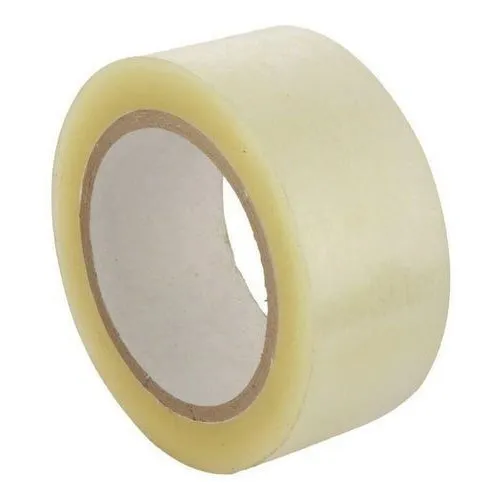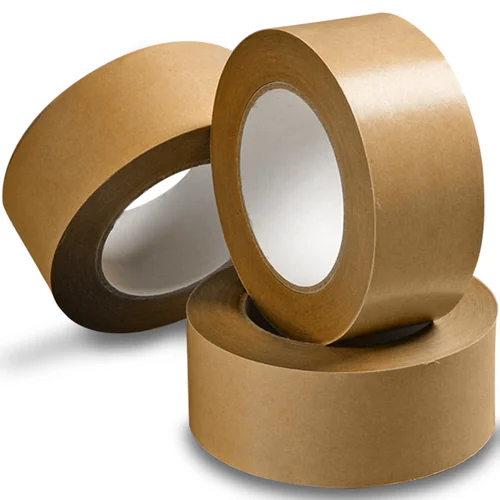What is Adhesive Tape?
“Adhesive tape, also known as sticky tape or just tape, is a type of flexible material that is coated with an adhesive substance on one or both sides. The adhesive allows the tape to stick to surfaces and materials, making it a useful tool for various applications. Adhesive tape can come in different types and sizes, with various levels of strength and adhesion, depending on the specific use case. Adhesive tapes are commonly used for packaging and shipping, as well as for securing materials, masking surfaces, and marking areas.”
History of Adhesive Tape in Brief Below:
The history of adhesive tape goes back to the mid-19th century when various types of adhesive materials were developed. In 1845, a surgeon named Dr. Horace Day invented a type of adhesive plaster made from rubber and used it to close wounds. In the early 20th century, various companies began developing and manufacturing adhesive tapes for industrial and commercial use.
One of the first types of adhesive tape was made from cellophane, a transparent and moisture-resistant material. In 1928, a young engineer named Richard Drew working for the 3M company developed a type of adhesive tape made from cellophane coated with a pressure-sensitive adhesive. This tape was initially used for masking surfaces during painting, but later became known as Scotch Tape and was used for various applications.
During World War II, adhesive tape became an essential tool for the military, used for packaging, repairing equipment, and marking areas. The development of synthetic materials and adhesives in the post-war period led to the creation of a wide variety of adhesive tapes for different applications.
Today, adhesive tape is used for a wide range of purposes, from everyday household uses to industrial and commercial applications. The development of new materials and adhesive technologies continues to improve the performance and versatility of adhesive tapes.
Making of Adhesive Tape in Brief Below:
The manufacturing process of adhesive tape can vary depending on the type of tape being produced, but generally involves the following steps:
Backing material preparation: The backing material for the tape is prepared, which can be made from a variety of materials such as paper, plastic, or fabric. The material is coated with a release agent to prevent the adhesive from sticking to the backing during the coating process.
Adhesive coating:The adhesive material is applied to the backing material using a coating machine. The adhesive can be applied as a solvent-based liquid, hot melt, or pressure-sensitive material depending on the type of tape being produced.
Drying: The coated backing material is then passed through a drying oven to evaporate any solvents and ensure that the adhesive has properly bonded to the backing.
Slitting: The dried coated material is then slit into the desired width and length using a slitting machine.
Rewinding: The slit tape is then rewound onto rolls for packaging and shipping.
Adhesive Tape Benefits
Adhesive tape has a variety of benefits and is widely used for different purposes. Here are some of the benefits of adhesive tape:
Versatile – Adhesive tape can be used for a wide range of applications, from packaging and shipping to securing materials, masking surfaces, and marking areas.
Easy to use – Adhesive tape is easy to apply and can be used without the need for special tools or equipment.
Cost-effective – Adhesive tape is generally an affordable option compared to other types of fasteners or adhesives.
Strong adhesive properties – Adhesive tape can provide strong bonding properties and can be used on a variety of surfaces, including paper, plastic, metal, and wood.
Convenient – Adhesive tape can be easily transported and stored, making it a convenient option for use in various settings.
Customizable – Adhesive tape can be made in different sizes, widths, and colors to meet specific needs and preferences.
Safe –Most adhesive tapes are safe to use and do not contain harmful chemicals or toxins.


Specifications:
| Width : | Adhesive tape comes in different widths, ranging from narrow tapes used for delicate applications to wide tapes used for heavy-duty applications. |
| Length : | Adhesive tape rolls come in varying lengths, ranging from a few feet to several hundred feet. |
| Thickness: | The thickness of adhesive tape can vary depending on the type of tape and its intended use. Some tapes are thin and lightweight, while others are thick and heavy-duty. |
| Adhesive strength : | The strength of the adhesive can vary depending on the type of tape and its intended use. Some tapes have a low-tack adhesive that can be easily removed without leaving residue, while others have a strong adhesive that provides a permanent bond. |
| Backing material : | The backing material for adhesive tape can vary, with options including paper, plastic, fabric, foil, and more. |
| Color: | Adhesive tape comes in a variety of colors, including transparent, white, black, and a range of other colors. |
| Temperature resistance: | Some adhesive tapes are designed to withstand high temperatures, making them suitable for use in extreme environments. |
| Water resistance: | Some adhesive tapes are water-resistant or waterproof, making them suitable for use in wet environments. |
| Chemical resistance: | Some adhesive tapes are resistant to certain chemicals, making them suitable for use in industrial or laboratory settings. |